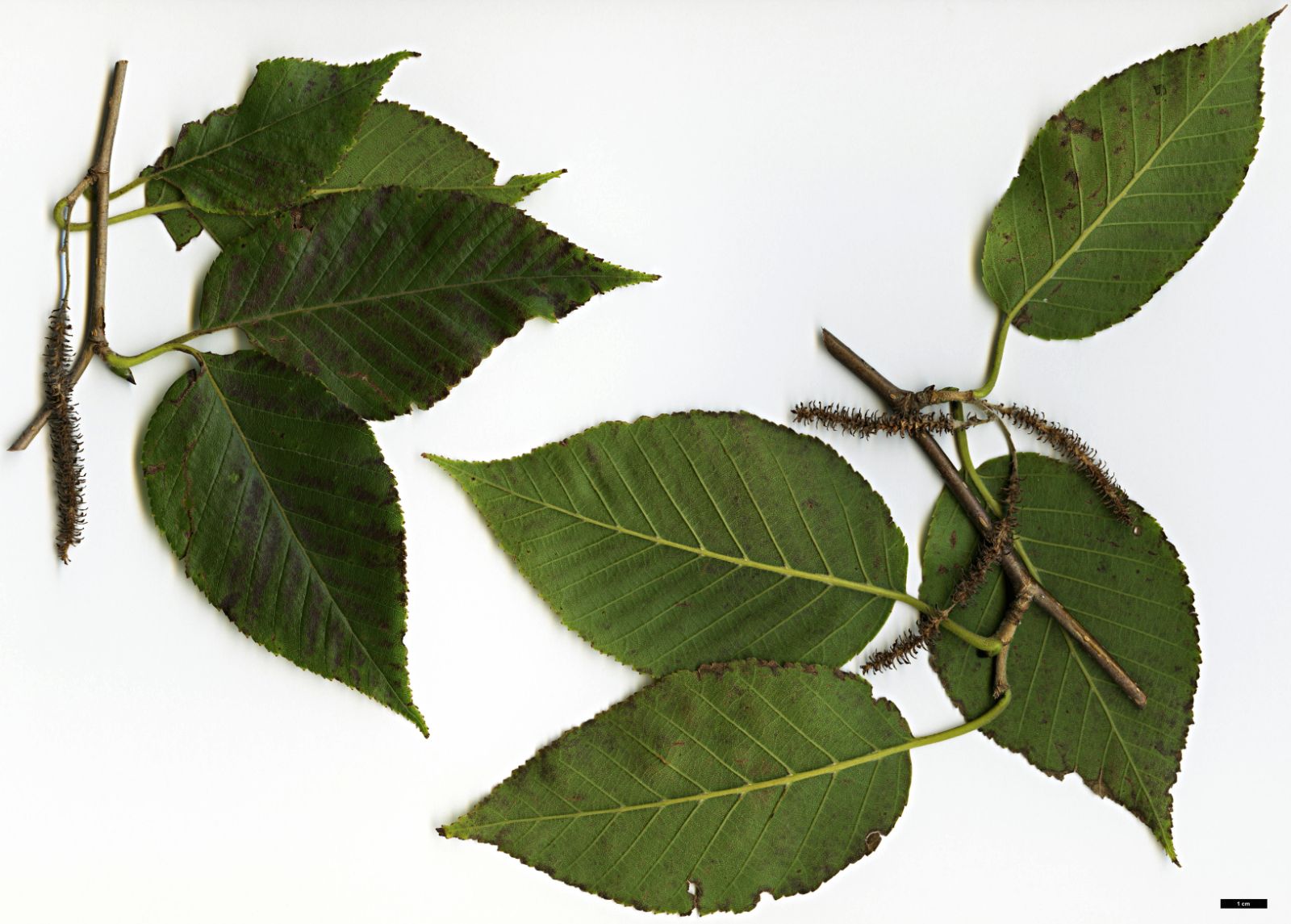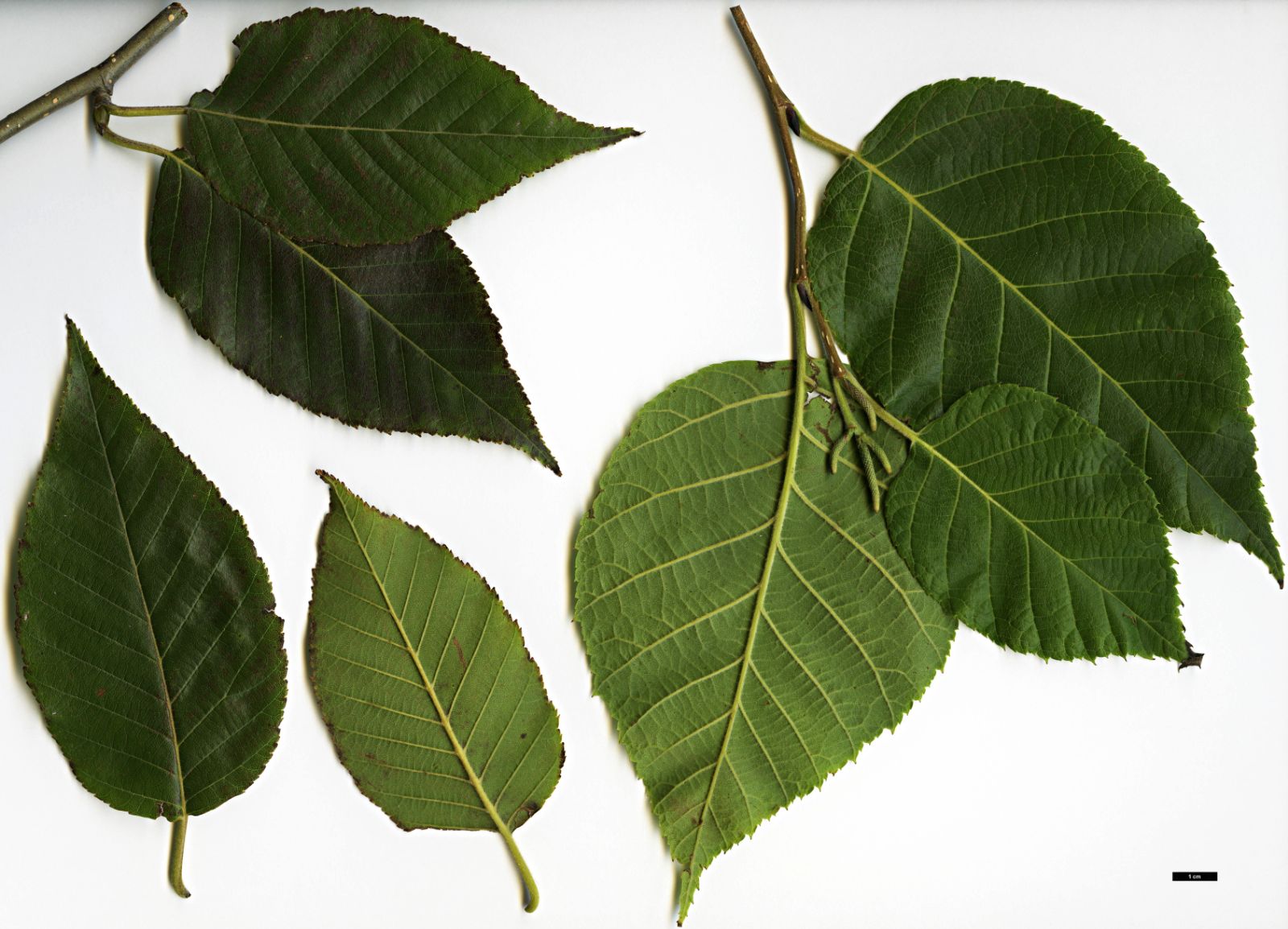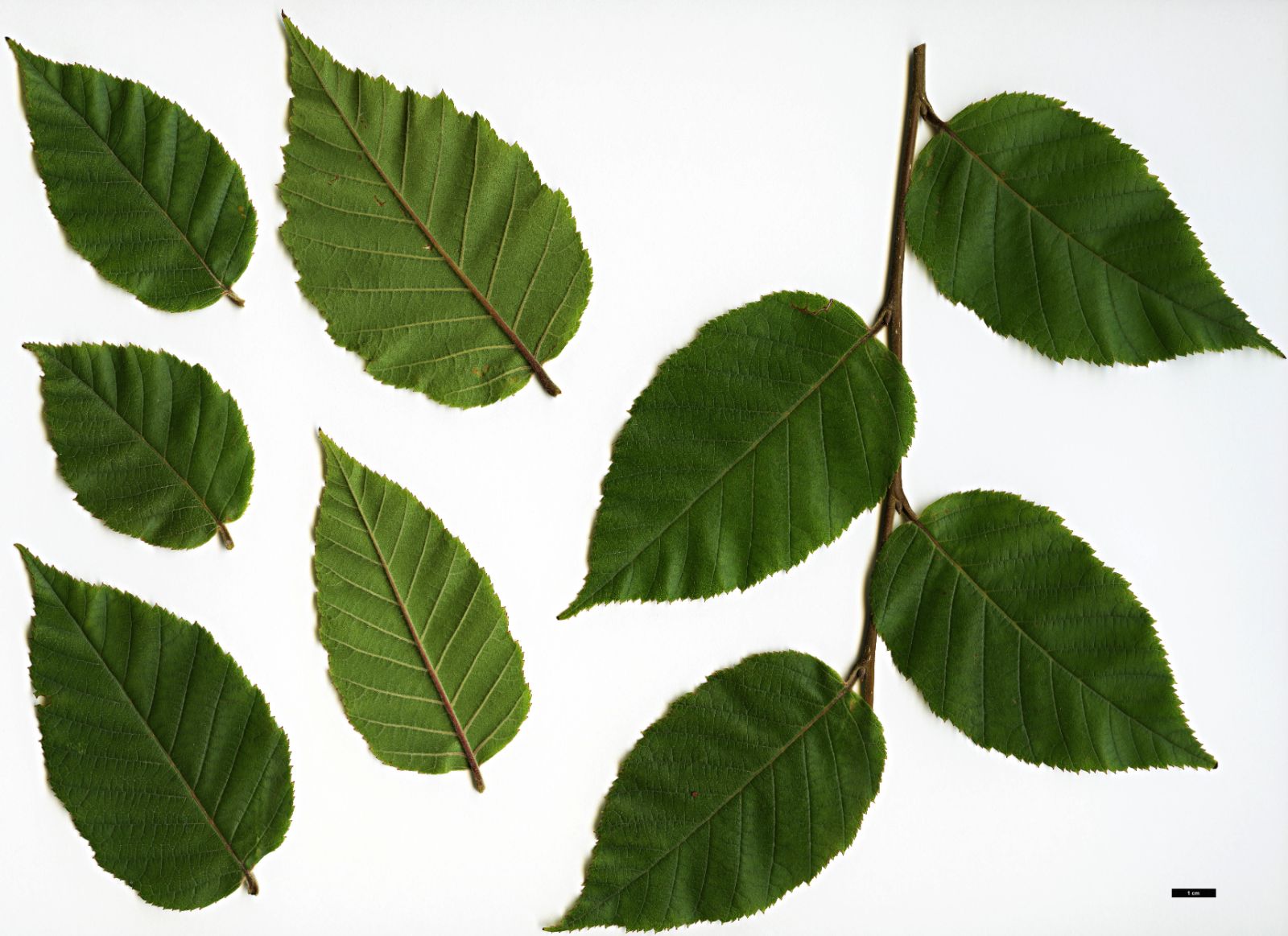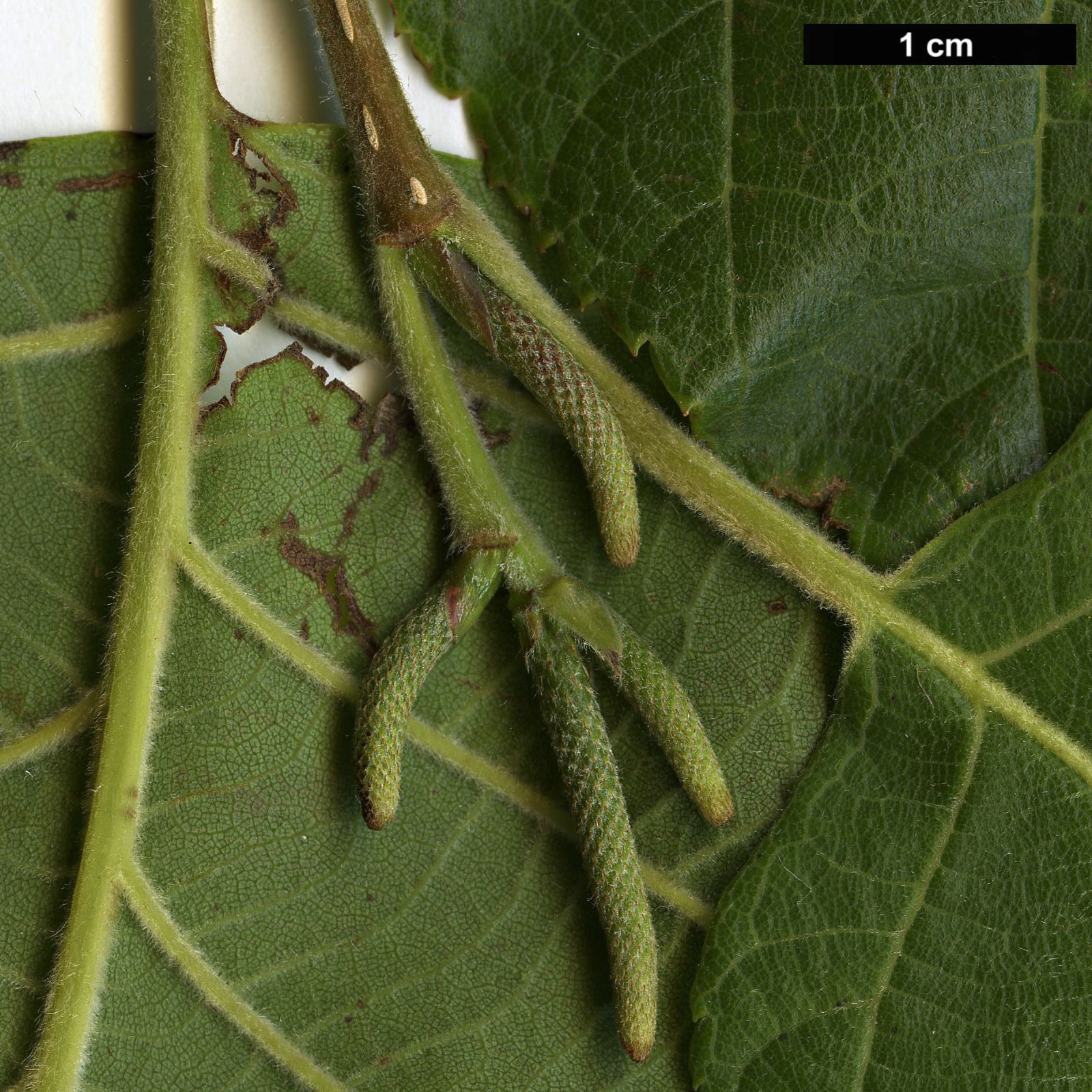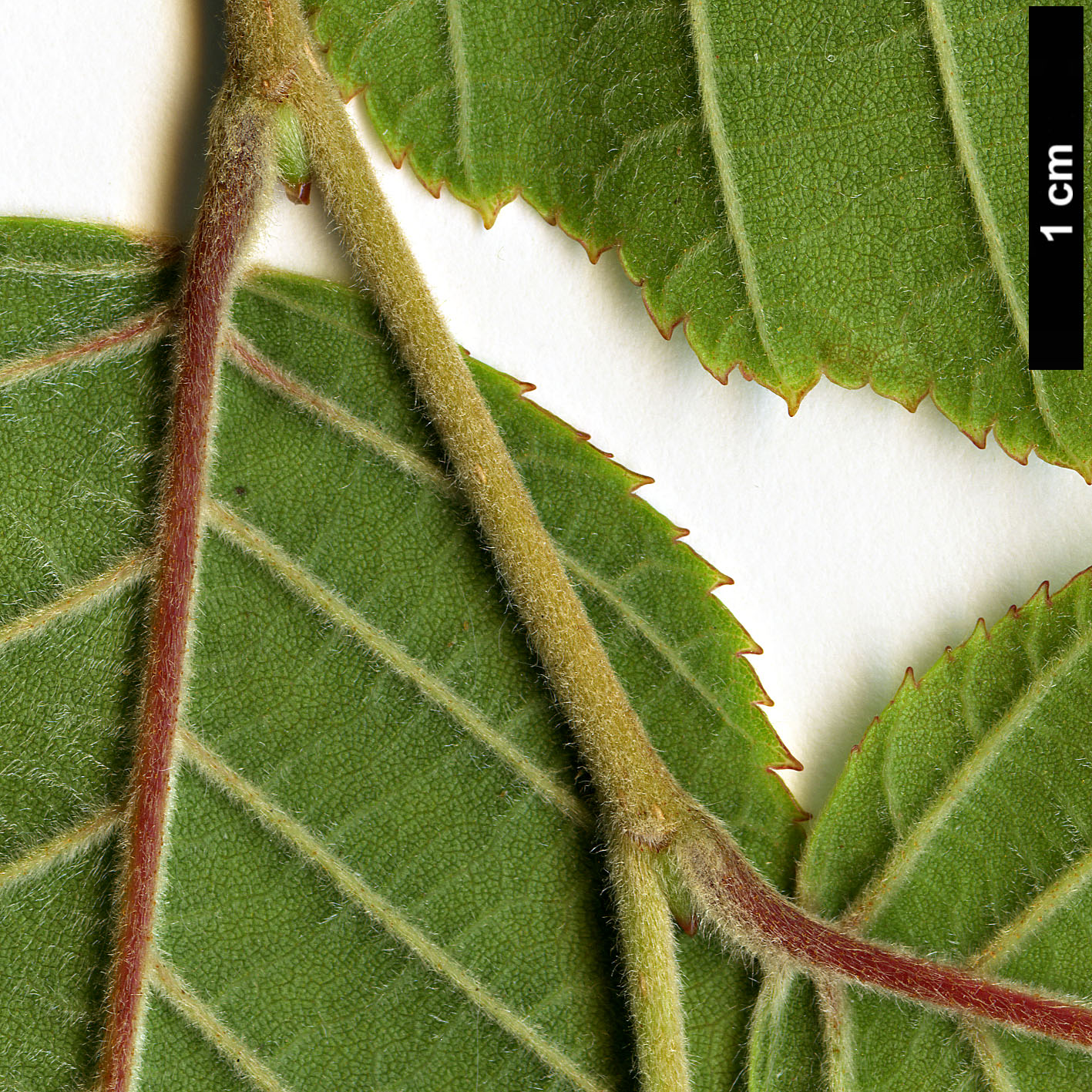Betula cylindrostachya
Credits
Article from New Trees by John Grimshaw & Ross Bayton
Recommended citation
'Betula cylindrostachya' from the website Trees and Shrubs Online (treesandshrubsonline.
Genus
Other taxa in genus
- Betula albosinensis
- Betula alleghaniensis
- Betula × aurata
- Betula bomiensis
- Betula × caerulea
- Betula chichibuensis
- Betula chinensis
- Betula coerulea-grandis
- Betula cordifolia
- Betula corylifolia
- Betula davurica
- Betula delavayi
- Betula ermanii
- Betula forrestii
- Betula glandulosa
- Betula globispica
- Betula grossa
- Betula humilis
- Betula insignis
- Betula jacquemontii
- Betula lenta
- Betula luminifera
- Betula lutea
- Betula mandshurica
- Betula maximowicziana
- Betula medwediewii
- Betula nana
- Betula neoalaskana
- Betula nigra
- Betula occidentalis
- Betula papyrifera
- Betula pendula
- Betula platyphylla
- Betula populifolia
- Betula potaninii
- Betula pubescens
- Betula pumila
- Betula raddeana
- Betula schmidtii
- Betula szechuanica
- Betula tianschanica
- Betula × utahensis
- Betula utilis
Tree to 30 m. Bark brown or greyish black. Branchlets yellowish brown with dense, yellow pubescence. Leaves deciduous, 5–14 × 2–8 cm, ovate to elliptic, oblong or ovate-lanceolate, both surfaces densely pubescent when young, lower surface with multiple resin glands, tufts of hair in the vein axils, 13–14 lateral veins on each side of the midvein, margins with irregular double serrations, apex acuminate; petiole 0.8–1.5 cm long with dense yellow pubescence. Monoecious; staminate inflorescences catkin-like, solitary and to 14 cm long; pistillate inflorescences catkin-like, in pairs, pedunculate, long, narrow and cylindrical, 2.5–10 × 0.5–0.7 cm. Flowers inconspicuous; bracts pubescent to spongy at the base, three-lobed. Fruit a tiny, pubescent samara with membranous wings. Flowering April to June, fruiting July to August (China). Li & Skvortsov 1999. Distribution BHUTAN; CHINA: Sichuan, Xizang, Yunnan; INDIA: Assam; MYANMAR; NEPAL. Habitat Subtropical to warm-temperate broadleaved forest between 1400 and 2800 m asl. USDA Hardiness Zone 9. Conservation status Not evaluated. Cross-references B422, K224. Taxonomic note The tetraploid B. cylindrostachya is a member of subgenus Acuminatae and closely related to the diploid B. alnoides and B. luminifera, with which it has been confused. It can be distinguished from B. alnoides by its spring rather than autumn–winter flowering period, its wider fruiting catkins and more cordate leaf bases. Some material in cultivation introduced as B. alnoides is probably B. cylindrostachya (Ashburner & McAllister, in prep.). Betula luminifera is morphologically very similar, but has (usually) solitary female catkins (groups of two to six catkins in the other two).
Betula cylindrostachya is rare in cultivation, perhaps because it comes from lower altitudes in a more southerly range and is less hardy than most birches. It is potentially a large tree but is tender when young, and particularly vulnerable as this group of birches (subgenus Acuminatae) lacks dormant buds to come to the rescue if new growth is damaged by frost. Despite this it does well in mild and coastal areas, with collections made in Bhutan (by Keith Rushforth) and northwestern India (by Kenneth Ashburner) thriving at Ness Botanic Gardens (Ashburner & McAllister, in prep.). At Tregrehan there are two trees originating from a collection by Peter Cox and Steve Hootman (CH 9042). These are growing fast and in 2007 were about 10 m tall, with attractive dark brown, shiny trunks, and long showy catkins in early spring (T. Hudson, pers. comm. 2007).

